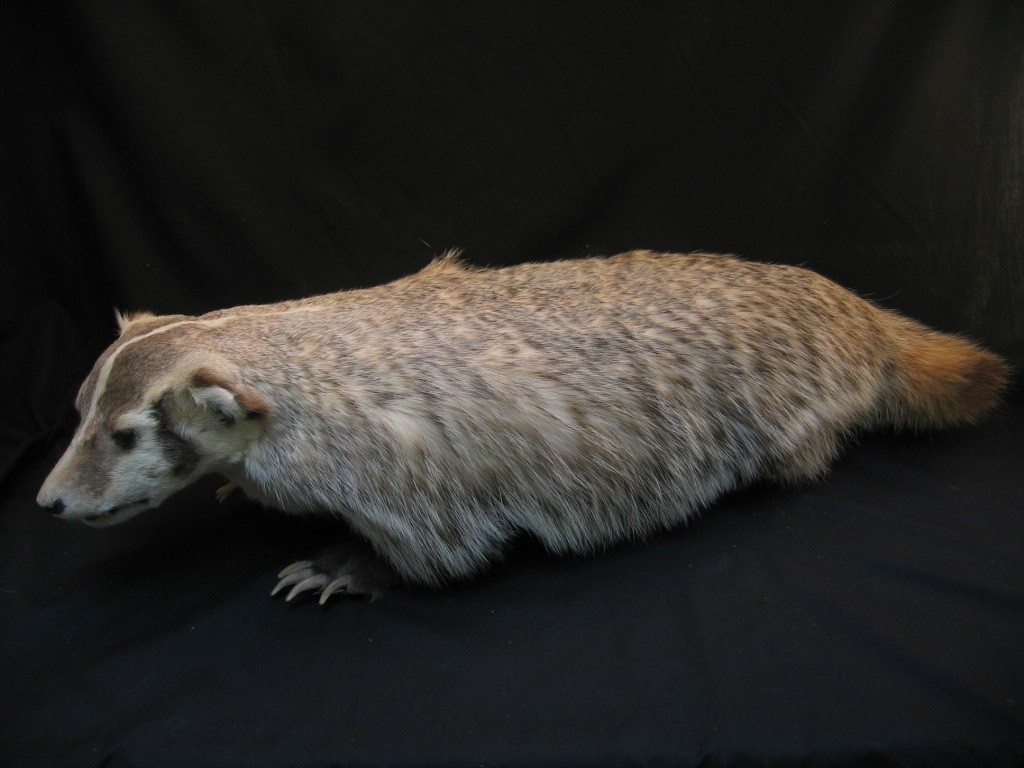Badger
Chordata Mammalia Carnivora taxus
Common Badger
The powerful legs and claws enable the badger to burrow underground in search of food (squirrels, mice, etc.) and establish a home or den. Litters number one to five offspring. The badger is not a true hibernator although it may remain underground for many weeks during the coldest months of winter.
This specimen was obtained by exchange with J. P. Hawkins and Son of Winnipeg, Manitoba in July 1962. “Sam traded a ptarmigan for the badger”.
- Short legged
- Heavy set
- Silver in color
- White striped from the middle of nose to the middle of back
- White face with black lines on each side
- Claws are sharp
- Small ears
- Black eyes
- Tan colors on legs
- Food: earthworms, insects, grubs, small mammals, amphibians, retiles and birds as well as cereals, roots and fruits.
The specimen is a common badger, one of the largest members of the weasel family. The majority of the hairs on the back and sides are yellowish-white at the base, then black with a white tip. This gives the specimen an overall silvery-gray appearance. the overall colour of the hair on the head is brown with white cheeks and a white streak from the nose, over the forehead to the shoulders. Ventral pelage is a yellowish-white while the tail blends from silver-gray to brown with a black tip. Feet are dark brown with somwhat large, long claws (3 cm). The body as a whole is muscular, thickset, and low to the ground.


